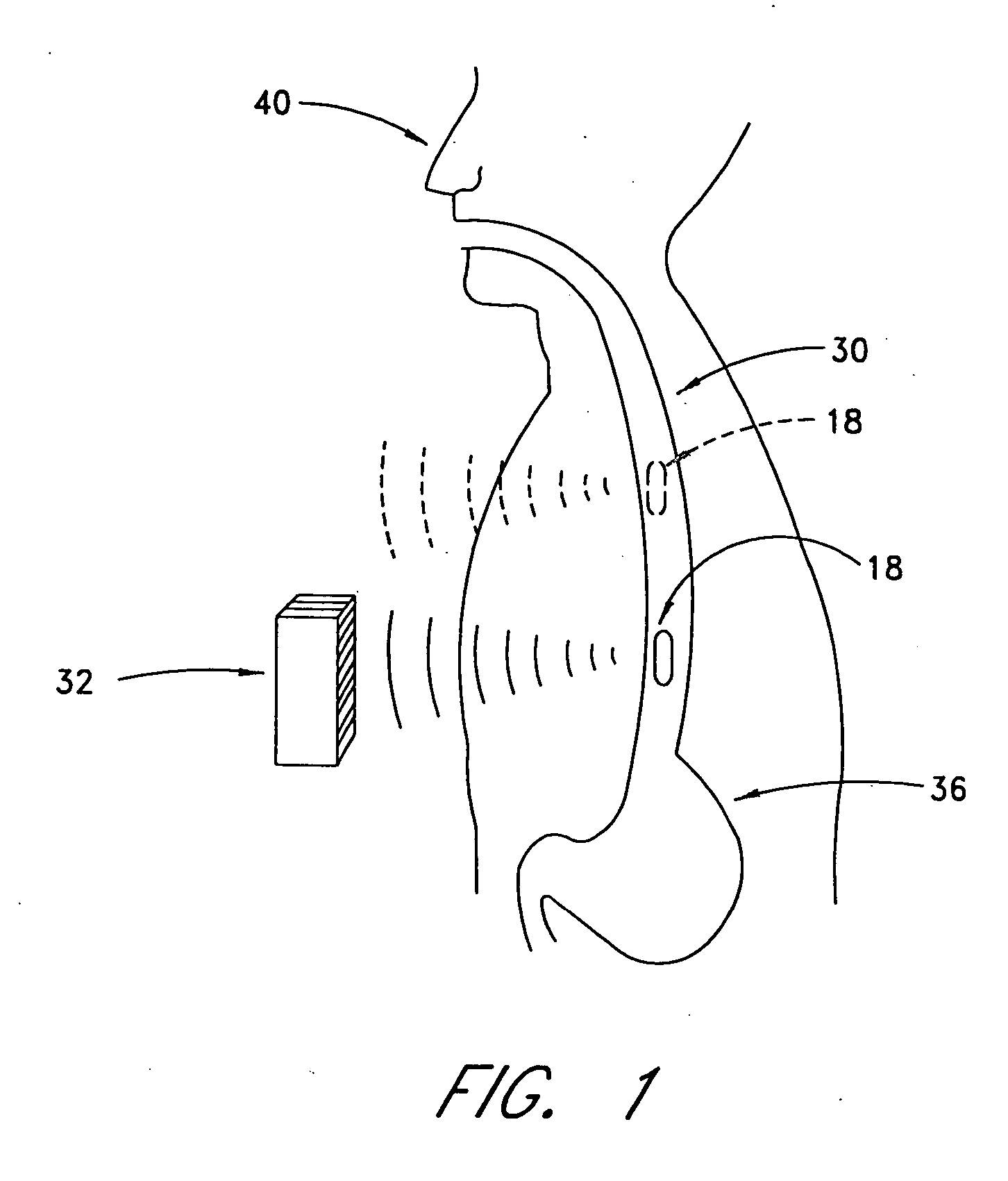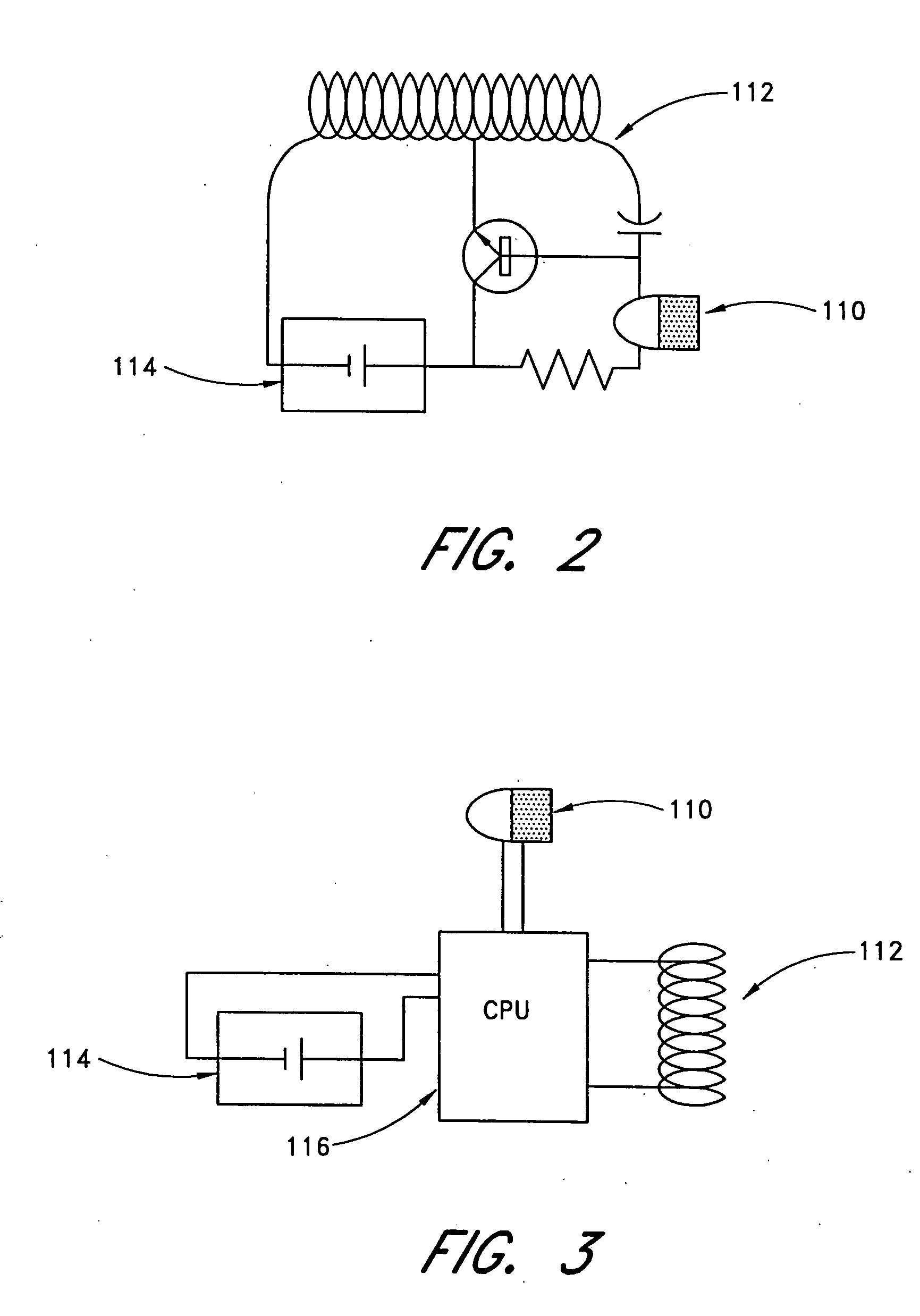Implantable monitoring probe
a monitoring device and implantable technology, applied in the field of minimally invasive physiological monitoring systems, can solve the problems of incompetence (incomplete closing), decreased resting tone, and potentially severe reflux disease of the stomach, so as to prolong the useful life of the monitoring device, minimize power consumption, and preserve battery power
- Summary
- Abstract
- Description
- Claims
- Application Information
AI Technical Summary
Benefits of technology
Problems solved by technology
Method used
Image
Examples
Embodiment Construction
[0056] The present invention provides a method and system for monitoring physiological parameters within a body lumen (cavity). The invention also comprises methods for attaching a physiological parameter monitor to a wall of a body lumen. The term “lumen” as used herein refers to the space within a tubular wall (e.g., a vessel) or the cavity within a hollow organ. While the invention is described in detail as applied to the human esophagus, those skilled in the art will appreciate that it can apply to other body lumens or cavities, such as those of the stomach, colon, rectum, bladder, uterus, vagina, biliary ducts (including the common bile duct), or blood vessels. The term “esophagus” in this discussion includes the lower esophageal sphincter (LES). Where different embodiments have like elements, like reference numbers are used.
[0057]FIG. 1 illustrates how physiological parameter data can be relayed by the monitor 18, which is positioned within the esophagus 30, to a radiofrequen...
PUM
| Property | Measurement | Unit |
|---|---|---|
| pressure | aaaaa | aaaaa |
| pressure | aaaaa | aaaaa |
| time | aaaaa | aaaaa |
Abstract
Description
Claims
Application Information
 Login to View More
Login to View More - R&D
- Intellectual Property
- Life Sciences
- Materials
- Tech Scout
- Unparalleled Data Quality
- Higher Quality Content
- 60% Fewer Hallucinations
Browse by: Latest US Patents, China's latest patents, Technical Efficacy Thesaurus, Application Domain, Technology Topic, Popular Technical Reports.
© 2025 PatSnap. All rights reserved.Legal|Privacy policy|Modern Slavery Act Transparency Statement|Sitemap|About US| Contact US: help@patsnap.com



